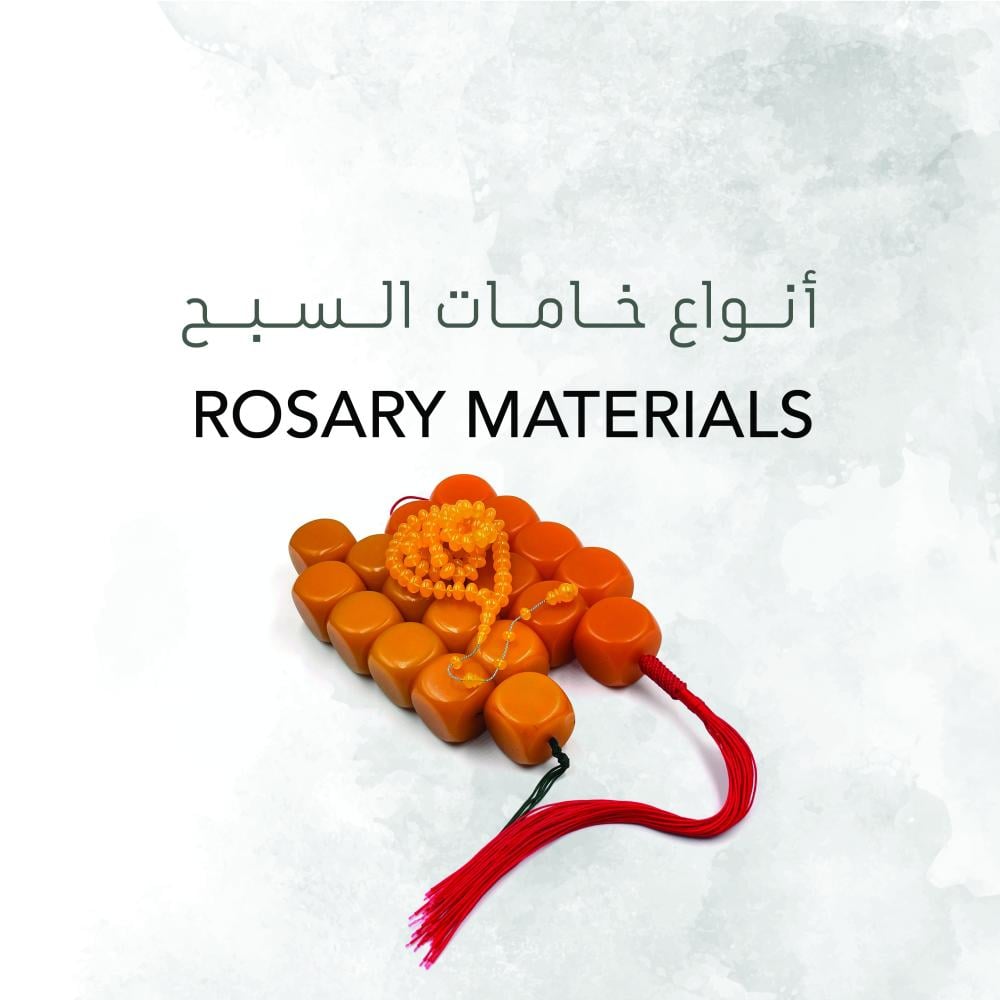Types of rosary materials - Learn about the most popular materials used in making rosaries
Rosary beads come in a variety of materials to suit different tastes and needs, from luxurious to practical everyday items. Here are the most common types of rosary materials used, along with their characteristics:
1. Amber
- One of the most popular and sought-after natural materials.
- It is characterized by its light weight and warm aromatic scent.
- The older the amber, the higher its value.
2. The invoice
- An old synthetic material of German origin, it is also found in forms such as stationery and accessories in France, America, and other countries.
- The old Fatouran is a rare and desirable item for rosary collectors.
- It has an attractive shine and changes color over time.
- Faturan is only used for old materials, while the term "new cast Faturan" is for marketing purposes, to convey the message that it is similar to the old ones in terms of color and packaging, and is priced at low prices, unlike old cast ones, which are scarce and rare in some forms and are priced at high prices.
3. Bakelite
- A type of synthetic resin used since the early 20th century.
- It has high heat resistance and smooth texture.
- It is considered a classic material for antique rosary enthusiasts.
- It is characterized by multiple colors. There is an old casting type, which is expensive, and a new casting type, which is economical to medium-priced.
- It is used in most ancient industries due to its strength, and in some shapes and colors its prices are very high due to the difficulty of finding and obtaining it.
- Some types are called mastic and are available in colors ranging from cream to white. Some are in the form of cubes, dates, or tires and are available in colors ranging from orange to carrot. They are called Yemeni mastic. There is also the old cast type and the new cast type.
4. Ivory
- A rare and precious natural material.
- It was used in the past, but its use is now limited due to protection laws.
- Ivory rosaries are often rare antiques.
- There are eight types of ivory used in prayer beads . The eighth type is wild boar, which is not used by Muslims due to its Islamic ruling.
5. Natural wood
- Agarwood, rose ivory, olive, sandalwood, ebony, rhinoceros wood and countless other species are used.
- It adds a spiritual and warm character to the rosary.
- Some species retain their natural fragrance for a long time.
- Easy to use and a popular choice for many hobbyists.
- Some types of wood are manufactured and come in beautiful colors. Aromatic mineral oils can be added to them. It is preferable not to expose them to vegetable oils or water to avoid rotting or cracking.
6. Fruits of trees
- It is similar to natural wood in terms of uses and care.
- One of the most famous types is the Brazilian coca, which is available in light and dark colors, and the serkali, which has a clear veining pattern with a dark brown color and is considered the most desirable type among hobbyists.
- The tagua fruit, or vegetable ivory, is characterised by its hardness and the presence of veins that closely resemble animal ivory. It is a good alternative to ivory.
- Peony fruit is known by various names, such as cross peony, soaking peony, and Chinese peony.
6. Agate
- A natural gemstone that symbolizes energy and comfort.
- It comes in multiple colors such as red, blue, and black.
- Agate rosary is durable and suitable for everyday use.
7. Mastic
- New cast synthetic material with a heritage character.
- Easy to shape and lightweight.
- Widely available and reasonably priced.
8. Acrylic and plastic
- Modern and easy to shape materials.
- Suitable for those looking for a light and practical rosary at a low price.
- Available in attractive assortments and colors.
Conclusion:
Choosing the right rosary material depends on your personal taste, budget, and intended use. Whether you're a hobbyist or a collector, understanding the different types of rosary materials can help you purchase authentic, high-quality rosaries that will last.

